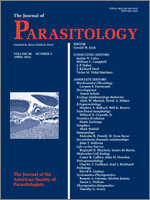Giardia intestinalis is the causative agent of human giardiasis, a common diarrheal illness worldwide. Despite its global distribution and prevalence, many questions regarding its basic biology and metabolism remain unanswered. In this study, we examine the accumulation and degradation of glycogen, an important source of stored carbon and energy, during the in vitro growth and differentiation of G. intestinalis. We report that, as G. intestinalis progresses through its growth cycle, cultures of trophozoites accumulate glycogen during the lag and early logarithmic phases of growth and then utilize this compound during their remaining logarithmic growth. As cultures enter the stationary phase of growth, they re-accumulate glycogen stores. The activity of glycogen phosphorylase, an enzyme involved in glycogen metabolism, also varied throughout in vitro trophozoite growth. During the in vitro induction of trophozoite differentiation into water-resistant cyst forms, the cultures initially accumulated stores of glycogen which diminished throughout transition to the cyst form. This observation is suggestive of a role for glycogen in the differentiation process. These studies represent the first thorough analysis of changes in glycogen content and glycogen phosphorylase activity during G. intestinalis growth and differentiation.
BioOne.org will be down briefly for maintenance on 12 February 2025 between 18:00-21:00 Pacific Time US. We apologize for any inconvenience.
How to translate text using browser tools
1 April 2012
Glycogen Storage and Degradation During In Vitro Growth and Differentiation of Giardia intestinalis
Prajakta Pradhan,
Scott W. Lundgren,
Wayne A. Wilson,
Andrew Brittingham
ACCESS THE FULL ARTICLE

Journal of Parasitology
Vol. 98 • No. 2
April 2012
Vol. 98 • No. 2
April 2012




